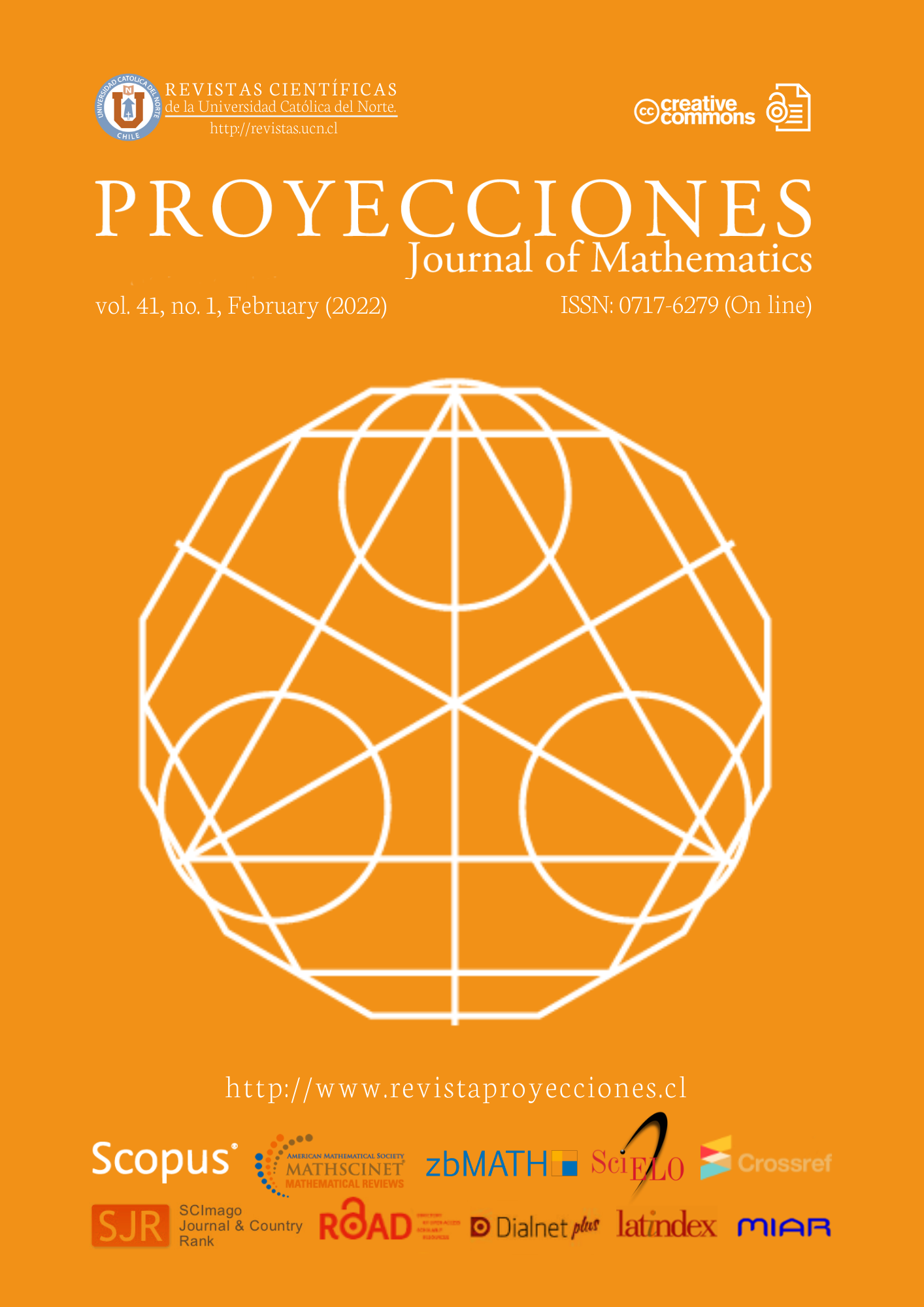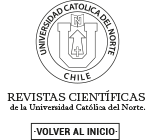Soft separation axioms and functions with soft closed graphs
DOI:
https://doi.org/10.22199/issn.0717-6279-4004Keywords:
soft open set, soft T1 space, soft Ri space i = 0, 1, soft graph, soft cluster set, soft kernelAbstract
Several notions on soft topology are studied and their basic properties are investigated by using the concept of soft open sets and soft closure operators which are derived from the basics of soft set theory established by Molodtsov [7]. In this paper we introduce some soft separation axioms called Soft R0 and soft R1 in soft topological spaces which are defined over an initial universe with a fixed set of parameters. Many characterizations and properties of these spaces are found.
Necessary and sufficient conditions for a soft topological space to be a soft Ri for i = 0, 1 space are also presented. Furthermore, the concept of functions with soft closed graph and soft cluster sets are defined.
Many results on theses two concepts are proved also it is proved that a function has a soft closed graph if and only if its soft cluster set is degenerate.
References
M. Akdag, and A. Ozkan, “On soft preopen sets and soft pre separation axioms”, Gazi university journal of science, vol. 27, no. 4, pp. 1077-1083, 2014.
S. Bayramov and and C. G. Aras, “A new approach to separability and compactness in soft topological spaces”,Turkic World Mathematical Society Journal of pure and applied mathematics, vol. 9, no. 1, pp. 82-93, 2018.
S. Hussain and B. Ahmad, “Some properties of soft topological spaces”, Computers and mathematics with applications, vol. 62, no. 11, pp. 4058–4067, 2011.https://doi.org/10.1016/j.camwa.2011.09.051
S. Hussain, “Soft separation axioms in soft topological spaces”, Hacettepe journal of mathematics and statistics, vol. 44, no. 3, pp. 559-568, 2015.
A. Kharal and B. Ahmad, “Mappings on soft classes”, New mathematics and natural computation, vol. 7, no. 3, pp. 471–481, 2011. https://doi.org/10.1142/S1793005711002025
P. K. Maji, R. Biswas, and A. R. Roy, “Soft set theory”, Computers and mathematics with applications, vol. 45, no. 4-5, pp. 555–562, 2003.https://doi.org/10.1016/S0898-1221(03)00016-6
D. Molodtsov, “Soft set theory-first results”, Computers and mathematics with applications, vol. 37, no. 4-5, pp. 19–31, 1999. https://doi.org/10.1016/S0898-1221(99)00056-5
R. Sahin and A. Kucuk, “Soft filters and their convergence properties”, Annals of fuzzy mathematics and informatics, vol. 6, no. 3, pp. 529-543, 2013.
M. Shabir and M. Naz, “On soft topological spaces”, Computers and mathematics with applications, vol. 61, no. 7, pp. 1786–1799, 2011. https://doi.org/10.1016/j.camwa.2011.02.006
M. E. El-Shafei, M. Abo-Elhamayel, and T. M. Al-Shami, “Partial soft separation axioms and soft compact spaces”, Filomat, vol. 32, no. 13, pp. 4755–4771, 2018. https://doi.org/10.2298/FIL1813755E
P. Wang and J. He, “Characterization of soft compact spaces based on soft filter”, Journal of theoretical and applied information technology, vol. 79, no. 3, pp. 431-436, 2015.
Ş. Yüksel, N. Tozlu, and Z. G. Ergül, “Soft filter”, Mathematical sciences, vol. 8, no. 1, 2014. https://doi.org/10.1007/s40096-014-0119-4
I. Zorlutuna, M. Akdag, W. K. Min and S. Atmaca, Remarks on soft topological spaces, Annals of fuzzy mathematics and informatics, vol. 3, no. 2, pp. 171-185, 2012.
İ. Zorlutuna and H. Çakır, “On continuity of soft mappings”, Applied mathematics and information sciences, vol. 9, no. 1, pp. 403–409, 2015. https://doi.org/10.12785/amis/090147
Published
How to Cite
Issue
Section
Copyright (c) 2022 Alias B. Khalaf, Nehmat K. Ahmed, Qumri H. Hamko

This work is licensed under a Creative Commons Attribution 4.0 International License.
-
Attribution — You must give appropriate credit, provide a link to the license, and indicate if changes were made. You may do so in any reasonable manner, but not in any way that suggests the licensor endorses you or your use.
- No additional restrictions — You may not apply legal terms or technological measures that legally restrict others from doing anything the license permits.












